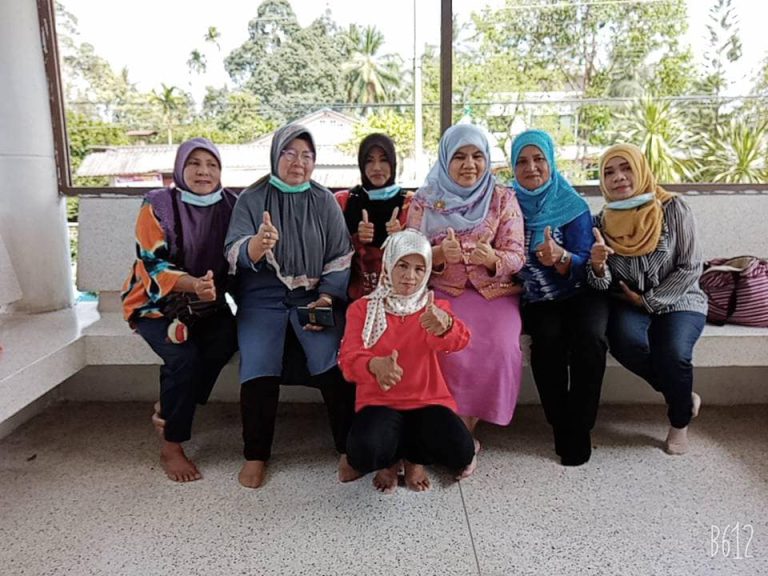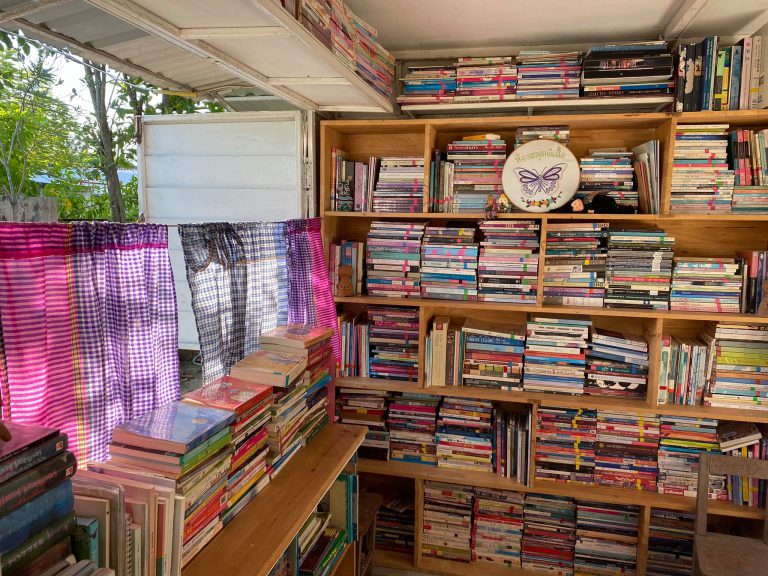Story: Ekkapop Sittiwantana
Recently, on Valentine’s day, Peaceful Death held their “Day of Relief” conference at Buddhachinaraj Hospital, Phitsanulok, for the third year running. With a different title and theme each year, the conference raised awareness of palliative care in its first year, and in the following year was based on its title of “I Speak Out of Love”. This year’s conference, called “Healing… with Compassion”, unfolded over 14-15th February 2020.
The primary interest of this year’s conference was in broadening the horizons of the concepts and practices of “compassionate community” from clinic and hospital-based services to communities and society at large.
As a result, the format of the conference transformed from a series of conventional academic seminars to a presentation of different examples of community-based palliative care in the area around the hospital for local community members. The conference was colorfully decorated and non-hierarchically structured to create an atmosphere that encourages interaction and connection between participants. There was a table where people shared their experiences of caring for others (using a special deck of cards produced by Peaceful Death as a listening/communication tool), a table where medical staff received counsel on critical decisions through tarot card reading, an arts table for remembering and tending to loss, as well as an arts exhibition that encouraged viewers to recognize and tune into the goodwill and compassion within themselves and that others have shown them.
The Huai Yod Model of Compassionate Community
Many forms of compassionate community organizing and community palliative care were discussed on the conference stage. One of the speakers was Phra Krodsada Kantikaro of the Coalition of Men in Yellow Robes, based in Huai Yod, Trang. He emphasized that the participation of different groups of people has to be cultivated on the grounds of genuine relationship and mutual trust; this is the primary and foundational condition of building a compassionate community. Phra Krodsada visits hospital patients; when he arrives at a hospital, he introduces himself and his intention of fully supporting the patients by staying at the hospital. He has a team of helpers deliver his daily alms to the hospital staff to build familiarity and companionship across different areas of society. As these relationships grow and deepen, forms of solidarity on a larger scale become possible.
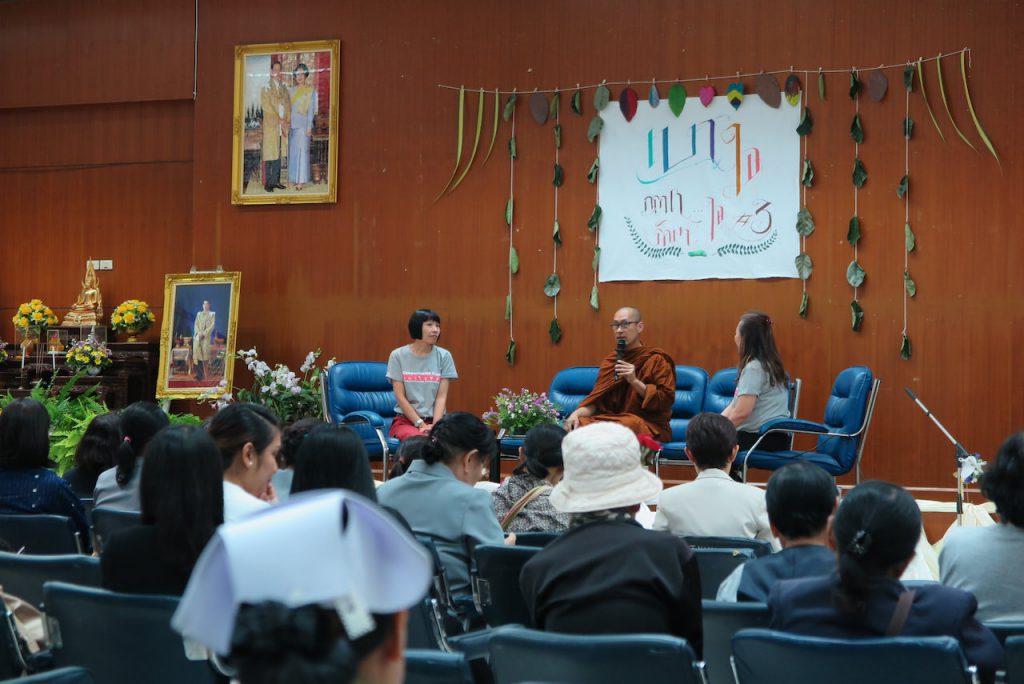
Phra Krodsada places an emphasis on transparency in his work. As a monk, he receives donations from community members to be passed on to hospitals and families of patients. The transparency and trustworthiness of Phra Krodsada’s team gives them a credibility that draws in volunteers and practitioners, broadening the capacity of their compassionate community organizing.
The Happiness at the End of the Road Collective, Kalasin
A team of volunteers and city officials in Kalasin attended the conference and spoke on several issues. They got started as a youth volunteering group working in disaster relief and the arrangement of funeral services for patients with no known relatives. New volunteer initiatives emerge when we see suffering around us without hesitating to provide support, and often start from projects that can be easily and promptly organised.
When the compassionate community network became acquainted with the Jutisukawadee organisation, which had expressed interest in branching out from public health funeral services to providing care for living patients, the network decided to organise a program that trains volunteers for patient visits. Thus, the “Volunteers for Happiness at the End of the Road” was born. The group visits terminally-ill and late stage patients in collaboration with hospitals and monks. Learning sessions and opportunities for reflection are structured into each visit to improve the effectiveness of the next. During the visits, the volunteers feel profound joy from experiencing the depths of compassion that are revealed in this line of work.
Stepping out of One’s Comfort Zone into a Space of Compassion
While at Nan Hospital, Doctor Walika Rattanachan saw how systems for supplying medical equipment to long-term care patients at home can be a concrete way of building supportive relationships between hospitals and local communities. An example of this is the Kiddee Project, a social enterprise that produces handbags out of recycled saline bags from Nan Hospital.
The project emerged from the hospital’s waste problem, which has led medical staff in all departments to find ways of reducing the hospital’s production of waste. Saline bags, made from strong and durable grade D plastic, are one of the most common waste products — it’s a shame that they have to be thrown away. After noticing this untapped resource and entering into discussions with designers, a seed of inspiration developed into a project that recycles saline bags into handbags for a lucrative price. Proceeds are directed back to the hospital and used to buy equipment such as beds, oxygen tanks, etc. for long-term care patients at home, enabling them, with the help of this social enterprise, to care for themselves.
Don’t Neglect Yourself in Your Compassion for Others
At the “Spiritual Healing” and “Spiritual Studies” discussion panels, Phra Chit Chitthasangwaro and a group of volunteers addressed the matter of tending to suffering and death, whether that be through caregiving work or the trauma and loss suffered in the wake of the mass shooting in Korat. Phra Chit advised that we should accept the reality of suffering, sickness and death that have already happened. They are a part of life and shouldn’t be denied. After all, refusing to acknowledge suffering that has already taken place will only intensify that suffering.
By “returning to our original nature” through attuning to our bodies, such as returning to the breath, perceiving movement and recentering the mind, we can stop the cycle of thoughts that cause us suffering. Then we can decide on our next action with a still, peaceful and unruffled temperament. “The fire within should not be acted upon”; that is, when we hear the murmur that expresses dissatisfaction with our current circumstances, we should not stoke the flames of anger within us and become incensed. That won’t improve our situation; we simply become one more angry person on this planet. Likewise, “the fire outside should not be brought within”. What this means is that we should learn to release and leave the problems of others with them, rather than impulsively draw problems that are not ours into ourselves. Everyone has their own karma. This should not be taken to mean that we should become callous and compassionless. It is simply that spiritual healing is only possible in a state of stability and tranquility void of anger. Only then can we act with clarity and be in a position to help others.
The Role of the Arts in the “Day of Relief” Project
The arts play an important role in inspiring positive feelings for the work of building compassionate communities and in creating a suitable atmosphere for processing loss.
In the singing and storytelling workshops organised by the KidJam theatre collective, for example, Ms. Bird adapts Shel Silverstein’s “The Missing Piece and the Big O” into a puppet show using spare air purifier parts. The story follows the journey of a circle searching for a missing triangle-shaped piece, and the journey of a triangle looking for a circle it can fit into. Both pieces speak of feeling ‘incomplete’ — now, ‘incompleteness’ does serve a useful role at times, though it is not a pleasant thing to feel. As for ‘becoming whole’, though it can feel good, it can sometimes become a catalyst of confusion and complication in life. We become reliant on the things we find to fill us, and forget that we feeling complete may not always be necessary after all.
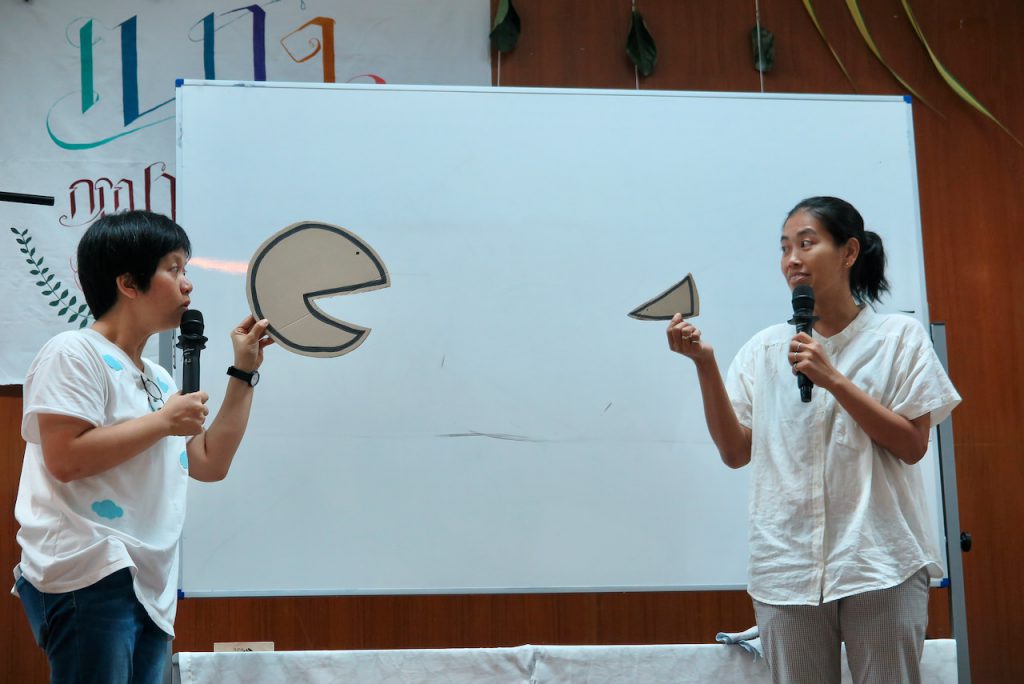
Another story that KidJam has chosen to share is “The Cat That Lived a Million Times”. The workshop organizers prepared sticks and art supplies, and then invited participants to write stories, poems, or create a piece of art in memory of someone who has passed away. What emerged was a space for personal expression, retrospection, mourning, gratitude, sadness and loss that participants together as companions in the suffering of birth, old age, sickness and death and in their capacity to contend with loss together.
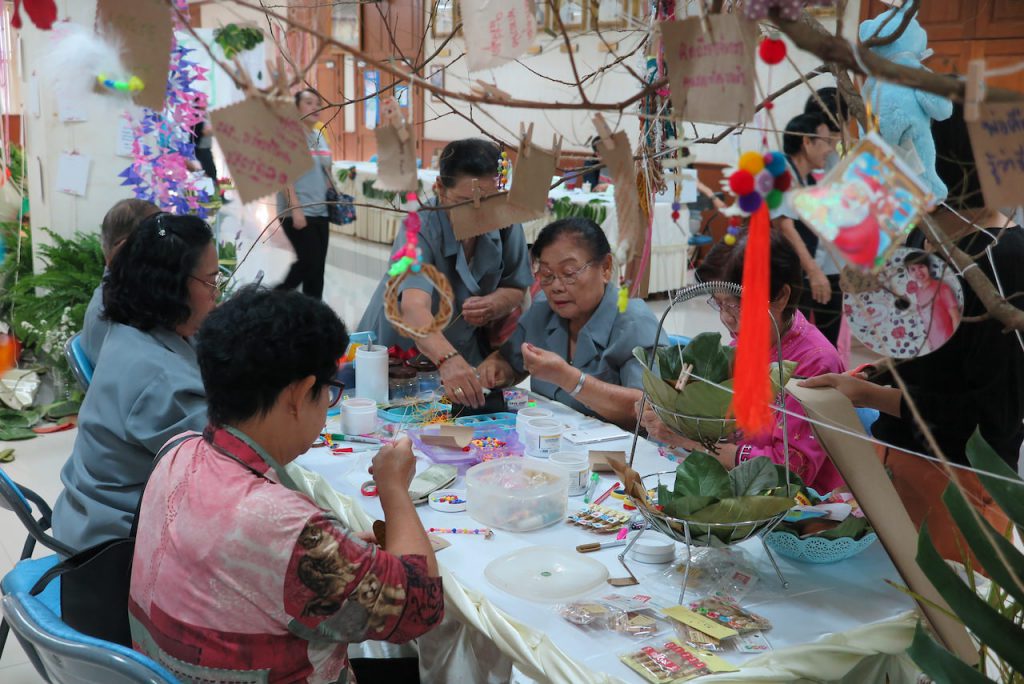
Next Year’s “Day of Relief”
The Day of Relief conference is made possible through the contribution of all its parts: administrators, hospital staff, volunteers and community representatives. We are grateful to the team of organizers that gave Peaceful Death the opportunity to host a “Journaling for Personal Healing” workshop, which allowed participants to intentionally choose their form of end of life care, and the “Care Club” session that tended to the emotional well-being of caregivers through conversation and art-making.
We hope that there will be more Day of Relief conferences to come that foster concrete collaborations between different sectors of society. As we have seen, most provinces that organize a conference like this will attest to the invigoration of efforts to care for another in communities, whether in health, sickness or the moment of departure.


